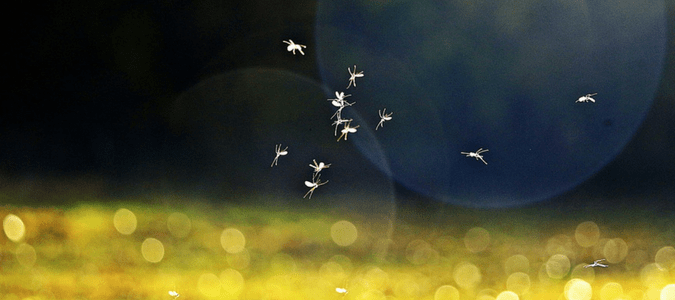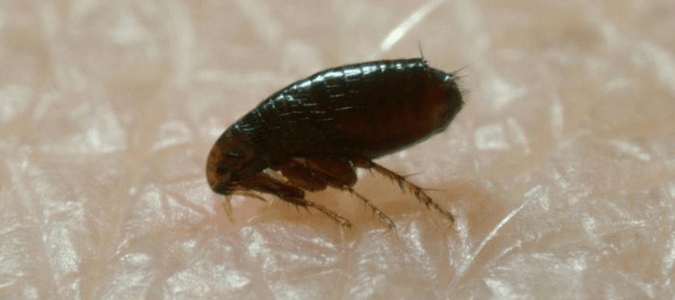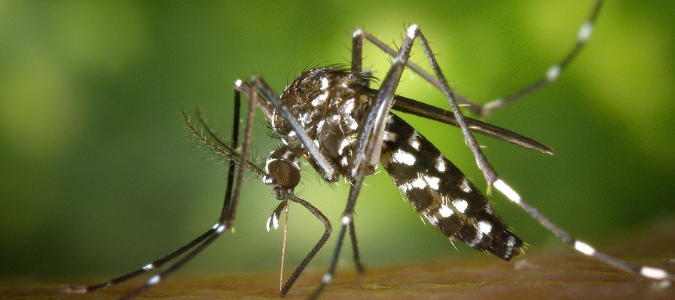You are outside, and something feels not quite right on your skin. You start scratching. And scratching. It could be a mosquito bite, or it could be a nip from a chigger. But how can you tell which is which? Bug bites overall look similar, and everyone reacts to them differently. That means it can be tough to know what is in your home or yard, waiting to strike. Here is a quick look at some ways you might differentiate the two.
Chigger Bites
You will generally find chiggers down low: wild plants, gardens, woods or brush, grass fields, shrubbery and lawns that are manicured and cut short. You more than likely won’t actually see them, however. These bugs, also known as berry bugs or harvest mites, are red mites that are so small that they are almost invisible with normal sight. There are more than 50 types of chiggers that feed on humans, and they are found around the globe. In the U.S., chiggers are mostly found in the Midwest, South and Southeast.
Most chiggers bite below waist level, though sometimes they will bite in sweatier areas such as armpits. They also might look for areas around the body where they feel protected, like a waistband or socks.
Chigger bites can happen day or night, and they are small, reddish bumps that look like tiny pimples. They cause extreme itching, which often increases at night and can last a week or longer. These bites are so itchy that some people wonder if chigger bites spread. Although they don’t, they are still incredibly annoying. The bites itch because the chiggers break into human skin and form a sort of tube system so they can feed off skin cells. The creation of this system means it takes longer to heal and thus, the itching sticks around. In some cases, the bites last two weeks. You probably won’t feel the effects of the bite for about six to 12 hours.
Though the bites are annoying and very itchy, chigger bites don’t have any health consequences. The pests don’t carry or spread any diseases. If you are noticing that you or your loved ones are getting chigger bites, it’s a good idea to call in a professional pest control specialist. They can offer solutions to get rid of these pests and make your yard more comfortable again.
Mosquito Bites
Mosquitoes thrive near standing or stagnant water on every continent except Antarctica. That’s a lot of real estate when you think of all the places you can find standing water—birdbaths, outdoor planters, kids’ pools, leaf cluttered gutters, tree holes and woodland pools.
They can bite any time of day, though dawn and dusk are the most likely time for mosquitoes to get you. Because they can fly, these pests can bite pretty much any exposed area of your body—mosquitoes can even bite through clothes! Mosquitoes are more attracted to darker colors, so wearing light-colored, looser items can help you avoid some bites.
Only the female mosquitoes bite, as they need the blood to help them produce their eggs. The bites present as pinkish or red raised bumps, and they can be just one or a grouping of them. The bites can look like hives sometimes, and some people get blisters at the site of mosquito bites. They can be very different depending on the person. Sometimes, the bites are swollen white bumps, sometimes they are itchy reddish-brown bites that are hard to the touch. Some people develop dark spots that look like bruises at the bite site.
As with chigger bites, the mosquito bites generally aren’t noticed right away. It can take a few minutes or up to a full day before you notice the itchy effects of the bites. Also, both kinds of bites can get secondary infections if you scratch the itchy bumps too much.
The pest’s saliva causes itchy mosquito bites. Mosquito saliva has proteins in it that start an immune system response. Your body releases histamines to fight the mosquito proteins, and those histamines are what cause the itching, redness and swelling.
Chigger Bites Versus Mosquito Bites
A big difference between chigger bites and those made by mosquitoes is that the flying insects do carry diseases, and some of them can be fatal. For instance, mosquitoes can carry the West Nile virus. This virus can cause the infected person to develop a fever and a headache, vomiting, diarrhea, joint pain, a rash or body aches. Some people can develop a neurological disorder that can be serious or even fatal, though under one percent of infected people develop this complication. If you notice any of these symptoms after a mosquito bite, seek medical attention right away.
Reduce your risk of getting bitten by using EPA-approved repellents on your skin, such as those that use DEET, Picaridin, IR3535 or oil of lemon eucalyptus. Getting rid of standing water keeps eggs from hatching and causing problems. Talk to a licensed pest control expert about the best solution for your situation.
Chigger Bites Versus Flea Bites
We’ve talked about how chigger bites look and the effects they can have on the person bitten. Flea bites have some similarities and differences. So what do flea bites look like?
Flea bites appear as red bumps, in lines or clusters. They are quite small and can have red halos around them. These pests want to bite your pets more than you, but they will bite you anyway if the opportunity arises. When they do bite, they do so around ankles or warm spots like behind your knees and armpits.
You might sense a recurring theme here, but flea bites are also very itchy. They can get painfully sore or cause a rash, too. If you scratch the bites too much, you might develop a secondary infection.
Chiggers live outside in certain areas and types of plants, but fleas usually live in floors and rugs, indoors. You will often find fleas in homes where pets also live.
If you notice fleas on your pets, on your bedding or flooring or bites on you or your loved ones, call in a licensed pest professional to get the problem solved.
Are Black-and-White Mosquitoes Dangerous?
Not all mosquitoes follow the same patterns. One type, the Asian tiger mosquito, is small (about one-quarter of an inch long). They have black-and-white coloring, specifically a white stripe down the center of its head and back and white bands on its legs.
Asian tiger mosquitoes lay eggs in natural and artificial containers filled with water, such as tree cavities, old tires or empty buckets. This variety doesn’t lay its eggs in ditches or marshes or more open water areas. They also stick close to home, staying within about a half-mile from their breeding site.
These mosquitoes feed during the day, not at night like some other varieties. They do have a lot in common with other mosquitoes. They are both attracted to dark clothing, sweat and carbon dioxide. Asian tiger mosquitoes feed on human blood, but also the blood of animals like squirrels, dogs and deer.
Asian tiger mosquitoes, also known as forest mosquitoes, are the dominant species in some areas. They are frequent biters, though those bites aren’t any more annoying than the bite of other varieties. If you are noticing an increase in any kind of mosquitoes in your yard or home, get in touch with a licensed expert for a variety of solutions to treat these pests.
What Viruses Do Asian Tiger Mosquitoes Carry?
Their bite might be ho-hum, but it can be serious. Asian tiger mosquitoes carry Eastern Equine Encephalitis (EEE), Zika virus, West Nile virus and dengue fever, as well as being the primary spreader of the serious Chikungunya virus.
This virus has no preventive or post-infection treatment available, so keeping your loved ones protected is key. This is one reason to call in a professional as soon as possible. The most common symptoms of Chikungunya are fever, swelling and joint pain, though some infected people also get a headache, muscle pain or a rash. Some people develop more severe symptoms that can be disabling. Don’t take any chances! Call a pest pro today to inspect your spaces, determine what types of insects are living with you and your family and present a pest treatment plan to sending them packing.
ABC Can Treat the Pests on Your Property
For a multi-tiered approach to mosquito control, contact ABC Home & Commercial Services. We have options to control mosquitoes, chiggers and fleas. This way, you and your family members will be comfortable at home.



